The Intriguing Science Behind Halloween Lamps
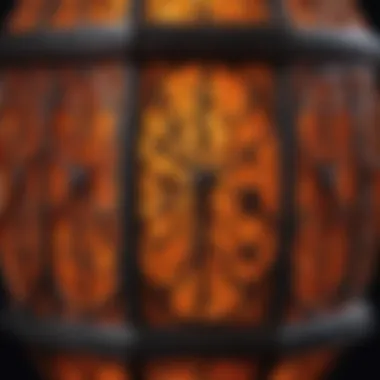
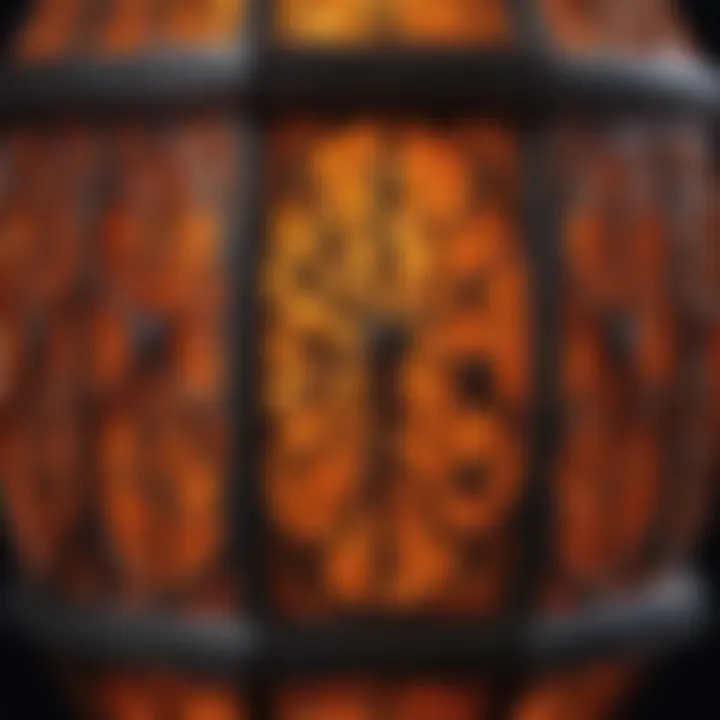
Intro
Halloween lamps have a special charm and significance that brings both spooky aesthetics and scientific curiosity to the festive season. From the traditional carved pumpkins, known as jack-o'-lanterns, to modern electric candle-lit lanterns, each variant holds a unique place in Halloween celebrations. These lamps not only illuminate our homes but also invite a wider inquiry into the artistry and science behind their creation. This article aims to unveil the mysteries of Halloween lamps, exploring their historical origins, types, and the underlying scientific principles that make them function. In addition, it will touch on the environmental aspects of lamp production, provide safety guidelines for usage, and share creative DIY projects that can appeal to inquisitive minds, particularly children. With the right blend of creativity and understanding, Halloween lamps can become tools for scientific exploration and a celebration of tradition.
Science Fun Facts
Interesting Trivia and Facts
- The term "jack-o'-lantern" comes from an Irish myth about a man named Stingy Jack, who tricked the devil and was forced to wander the Earth with only a carved turnip to light his way.
- The largest pumpkin ever recorded weighed over 2,600 pounds! This record was set in 2021 at the Stillwater Harvest Fest in Minnesota.
- Early Halloween lamps were often made from turnips in Ireland and Scotland before pumpkins became popular in North America.
Quirky Science Stories
In the early 1900s, scientists studied the glow of various materials to understand how they emit light. The use of candlelight versus electrical lights in lamps transformed how we celebrate Halloween. The electrical lights are safer and provide a more consistent glow compared to flickering candles.
Amazing Science Records
- The most lit jack-o'-lanterns on display at one time was achieved by the city of Keene, New Hampshire, with over 30,000 pumpkins in 2003.
Thought-Provoking Questions
- How does the shape of a pumpkin affect the way light spreads when carved?
- What materials could be used to make environmentally friendly Halloween lamps?
Discover the Wonders of Science
Exploring Various Scientific Concepts
Halloween lamps provide a range of phenomena to explore. Light diffusion, reflection, and even the chemistry behind candle wax can be discussed when engaging with such festive creations.
Educational Videos and Animations
Visual resources, such as animations, can illustrate how light travels. Channels on platforms like YouTube often cover scientific principles related to light and heat. These are great for young learners looking for a visual and captivating way to understand concepts.
Interactive Learning Tools
Applications and websites that offer interactive simulations can help kids experience science. Websites like Kahoot allow for educational games related to Halloween themes, promoting both learning and fun.
Real-Life Applications of Science
Understanding the science of light can lead to insights in various fields—from engineering to environmental science. When making Halloween lamps, children can explore energy-efficient options like LED lights, contributing to discussions about sustainability.
Science Quiz Time
Interactive Quizzes
Engaging quizzes can encourage learning and retention. Platforms like Quizlet provide fun quizzes related to Halloween and science.
Multiple Choice Questions
- What chemical reaction causes candles to burn?
- A) Oxidation
- B) Fermentation
- C) Photosynthesis
Brain Teasers and Puzzles
Try creating riddles about light sources or the science behind pumpkin growth.
Learning Through Gamification
Gamification encourages involvement. Create a scavenger hunt for scientific facts related to Halloween lamps. This will mix fun with the educational process, engaging children effectively.
Science Experiment Showcase
Fun and Engaging Experiments
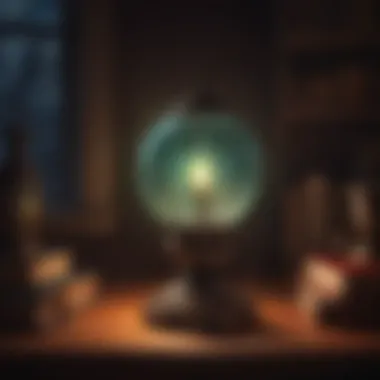
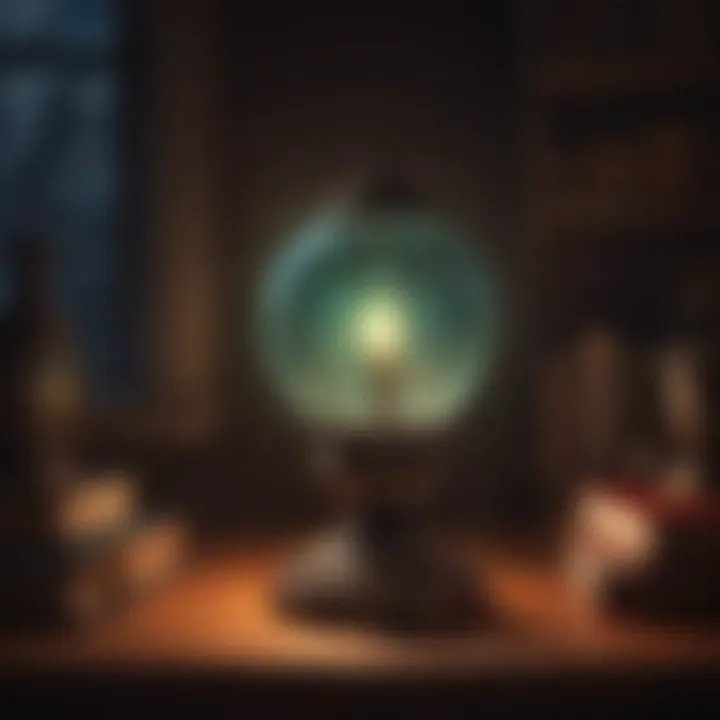
Making a DIY lava lamp with simple kitchen ingredients can spark excitement. This involves using water, oil, and food coloring, demonstrating density differences.
Step-by-Step Instructions
- Fill a clear bottle with water leaving some space at the top.
- Add vegetable oil until it floats on top of the water.
- Add a few drops of food coloring.
- Finally, drop in an Alka-Seltzer tablet to create a bubbling effect.
Materials List
- Clear bottle
- Water
- Vegetable oil
- Food coloring
- Alka-Seltzer tablets
Safety Tips and Precautions
- Always use materials that are non-toxic.
- Supervise younger children during experiments.
This culmination of fun facts, hands-on explorations, and educational opportunities presents Halloween lamps as more than just decorative elements; they are avenues for scientific discovery.
Intro to Halloween Lamps
Halloween lamps, often seen flickering in windows or adorning porches, hold more significance than mere decorations. They blend tradition, celebration, and science. Understanding these lamps deepens our appreciation for the rich cultural heritage behind them and the range of modern design options available.
Importance of Halloween Lamps
Halloween lamps are pivotal for setting the atmosphere during one of the most celebrated holidays in Western culture. They enhance the visual appeal of Halloween, serving as beacons that guide young trick-or-treaters and add an air of mystique to the night. The familiar sight of a carved pumpkin, illuminated from within, sparks nostalgia and creativity, linking generations through shared experiences.
Benefits of Learning About Halloween Lamps
Exploring Halloween lamps delivers several benefits. It unveils the history behind the traditions, allowing families to engage with their heritage. This engagement can be particularly valuable for parents wanting to pass on customs to their children, fostering a sense of belonging and understanding of celebrations.
Moreover, learning about the mechanics of how these lamps function cultivates a fascination with science and technology. From the chemistry involved in safe lamp design to physics principles that govern light and shadow, Halloween lamps provide a tangible connection between creativity and scientific exploration.
Considerations When Using Halloween Lamps
As with any festive decoration, safety is a primary concern. Understanding the differences between traditional, electric, and alternative lamp options can help families make informed choices. Additionally, being aware of the environmental impact of these lamps encourages responsible consumption.
By illuminating the importance and intricacies of Halloween lamps in our festivities, we can appreciate the role they play in not only the celebration of Halloween but also in the intersection of culture, creativity, and science.
"Halloween lamps are more than decorations; they are a celebration of history, creativity, and innovation that inspire generations."
This understanding sets the stage for further exploration into the historical context, types of lamps available, and the intriguing science behind their design.
Historical Context of Halloween Lamps
Understanding the historical context of Halloween lamps is crucial to appreciate their role in contemporary celebrations. In this section, we will explore the origins of Halloween celebrations and how the iconic pumpkin lantern evolved throughout time. This exploration not only highlights the significance of Halloween lamps but also enriches our understanding of cultural practices.
Origins of Halloween Celebrations
Halloween, originally known as Samhain, has roots that trace back over two thousand years to the ancient Celts. They marked the end of the harvest season and the beginning of winter. It was believed that on the night of October 31st, the boundary between the living and the dead became blurred. People would light bonfires and wear costumes to ward off roaming spirits.
As time progressed, these traditions fused with Christian practices, leading to the celebration of All Hallows' Eve on October 31st. This blending of beliefs contributed to the customs we recognize in modern Halloween festivities, including the use of decorative lamps. The lanterns served a practical purpose; they illuminated pathways during the dark night while symbolizing the guiding light for spirits.
Evolution of the Pumpkin Lantern
The pumpkin lantern, or Jack-o'-lantern, has become a symbol of Halloween, but its beginnings are rather humble. The tradition of carving vegetables dates back to the Celts, who originally used turnips and potatoes. The adaptation to pumpkins occurred after Irish immigrants brought the tradition to America in the 19th century.
Pumpkins, being larger and easier to carve, soon replaced turnips in this practice. The first recorded use of a pumpkin as a lantern occurred around the mid-1800s. When Halloween became popular in the United States, the Jack-o'-lantern became a decorative staple, showcasing creativity and resourcefulness while celebrating the spirit of the holiday.
"The pumpkin lantern exemplifies cultural adaptation; it reflects historical practices and the evolution of traditions across generations."
Types of Halloween Lamps
Understanding the types of Halloween lamps plays a crucial role in appreciating their significance during the holiday. Each type serves unique functions, reflects different cultural practices, and provides various aesthetic experiences. With the wide variety available, it is essential to know their distinct features, advantages, and safety considerations.
Traditional Jack-o-Lanterns
Traditional Jack-o-lanterns are perhaps the most iconic Halloween lamps. They are typically made from pumpkins, hollowed out and carved to display spooky or whimsical faces. The history of Jack-o-lanterns dates back to ancient Ireland, where turnips were traditionally used. Over time, pumpkins became the favored choice due to their larger size and availability in North America.
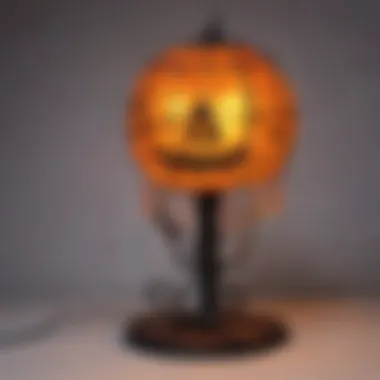
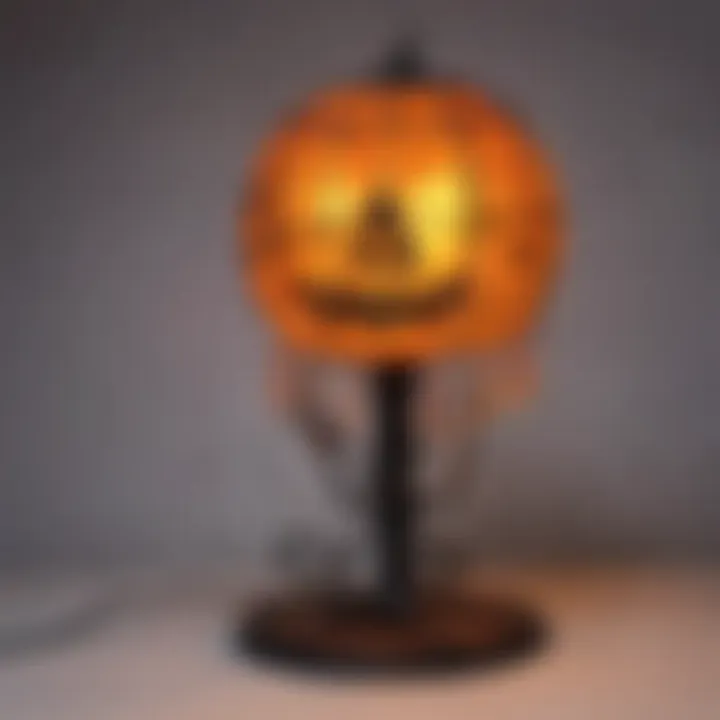
The process of creating a Jack-o-lantern involves several steps: choosing a suitable pumpkin, carving out the insides, and designing a face. Once complete, a candle or small light source is placed inside, illuminating the carving and casting an eerie glow. This tradition not only adds to the festive atmosphere but also encourages creativity and family involvement. Additionally, the pumpkin itself can be composted, reducing waste as biodegradable materials are favored in this aspect.
Electric Halloween Lamps
Electric Halloween lamps represent a modern evolution in Halloween lighting. These lamps come in various forms, including string lights, lanterns, and luminous decorations that employ LED technology. They provide a safe alternative to traditional flame-based lighting, significantly reducing the risk of fire hazards.
Electric lamps are often designed with energy-efficient bulbs, which can greatly lower electricity consumption compared to older incandescent options. They offer customizable and vibrant light effects, easily creating different moods for the Halloween season. As families continue to prioritize safety, electric lamps have become increasingly popular for both indoor and outdoor decorations, enhancing the Halloween experience without the worry of open flames.
Glow-in-the-Dark Lamps
Glow-in-the-dark lamps add a unique twist to Halloween decoration. These lamps soak up light during the day and emit a soft glow in the dark, creating a gentle and spooky atmosphere. They are often made from phosphorescent materials that charge in the presence of light and then slowly release it when it's dark.
These lamps can take various forms, including wall decorations, figurines, and standalone fixtures. They are safe for children and serve well in parties or when trick-or-treaters come to visit. Furthermore, the low energy requirement of these lamps makes them an environmentally-friendly choice for Halloween decorations, ideal for families who are conscious of their ecological footprint.
Projector Lights
Projector lights are a captivating addition to Halloween celebrations. These lamps project images, patterns, or animations onto walls or surfaces, creating visually engaging displays. They often feature themes like ghosts, spiders, or haunted houses, enhancing the spooky atmosphere of the holiday.
One advantage of projector lights is versatility. They can easily be adjusted to project different images, making them suitable for various settings. By utilizing LED technology, they provide bright displays with minimal energy consumption. This type of lamp can significantly transform ordinary spaces into eerie environments, making them appealing for both children and adults alike.
"The diversity in Halloween lamps not only enhances the festive spirit but also touches upon critical considerations like safety and sustainability."
Exploring the different types of Halloween lamps informs choices on decoration and safety measures. Understanding how each lamp works, encourages creativity and fun, while maintaining a level of caution. This consideration is essential for families as they navigate the Halloween tradition with an awareness of the environment.
The Science Behind Halloween Lamps
The creation and use of Halloween lamps is not mere decoration; it involves an intricate dance of science that combines light, materials, and safety technology. Understanding the science behind these lamps enhances appreciation of their design and functionality. It also allows parents and children to engage critically with the world of Halloween, linking festive traditions to scientific concepts. By examining how light operates, the materials involved, and safety mechanisms in electric lamps, readers will gain a broader outlook on how these elements contribute to a safe, festive environment.
How Light Works
Light is fundamental to the operation of Halloween lamps. It transforms dark spaces into vibrant displays, enhancing the atmosphere of Halloween. The basic principle of light involves the emission of photons, which are tiny particles that carry energy. When a lamp is turned on, these photons travel from the light source, reflecting off surfaces and illuminating the surroundings.
- Types of Light Sources:
- Incandescent Bulbs produce warm light and are often used in traditional lamps. However, they consume more energy and produce heat.
- LEDs are more energy efficient and last longer than traditional bulbs. They emit less heat and are safer to use in various designs.
- Glow Sticks rely on a chemical reaction. They produce light without electricity, making them popular for temporary decorations.
Understanding light's behavior helps in creating captivating displays that evoke the spirit of Halloween. Whether the flickering of a candle or the steady glow of an electric bulb, light shapes the ambiance of Halloween.
Materials Used in Lamp Design
Different materials greatly influence the performance and aesthetic of Halloween lamps. Knowing about these materials helps understand their functionality and environmental impact:
- Pumpkins: A traditional choice, pumpkins are hollowed out to create the classic Jack-o-Lantern. Their natural properties allow for carvings that cast unique shadows.
- Plastic and Styrofoam: Often used in pre-made Halloween lamps. They are lightweight and can be shaped easily, offering creative possibilities. However, they contribute to plastic waste.
- Glass: Glass is commonly used in electric lamps. It can withstand heat well and allows for intricate designs, but it is more fragile and requires careful handling.
- Metal: Metals, like aluminum and steel, are durable and found in modern lamp designs. They often serve as supporting structures for electric components.
Different materials come with their own set of advantages and disadvantages. Selecting appropriate materials is key not only for functionality but for environmental sustainability as well.
Safety Mechanisms in Electric Lamps
Electric lamps have evolved significantly, integrating safety mechanisms to prevent accidents during use. It is crucial for parents to understand these safety features, especially in homes with young children:
- Overheat Protection: Many electric lamps have built-in sensors that automatically cut power if the lamp becomes too hot.
- Sturdy Construction: Modern lamps are designed to resist tipping over, reducing the chance of spills or burns.
- Child-Safe Features: Several products include safety measures like covered bulbs or switches that are hard for little fingers to access.
- Quality Certifications: Look for lamps with safety certifications. These ensure the product has undergone rigorous testing to meet safety standards.
"The integration of safety technology is paramount for electric lamps, especially during festive seasons when children are curious and active."
By understanding the scientific principles and safety features of Halloween lamps, readers can appreciate the intricate connection between celebration and science. Observing how these elements work together lays the groundwork for exciting DIY projects and safe celebrations.
Environmental Impact of Halloween Lamps
The environmental impact of Halloween lamps is a topic of increasing relevance. As we celebrate, it is crucial to consider how our choices affect the planet. From the materials used in production to the disposal of these lamps post-celebration, each aspect carries weight. Understanding the environmental implications can help us make informed decisions.
Sustainability in Lamp Production
Sustainability in lamp production begins with the selection of materials. Using renewable resources reduces harm to ecosystems. Many manufacturers are shifting towards recycled materials, which lessens the overall carbon footprint.
- Renewable Resources: Using sustainable sources helps ensure materials are not depleting.
- Recycling: It is advisable to choose lamps made from recycled plastics or papers. This can significantly cut waste.
- Eco-friendly Processes: Companies are increasingly adopting production methods that reduce pollution and energy use. This focus ensures a smaller environmental impact by reducing carbon emissions during manufacturing.
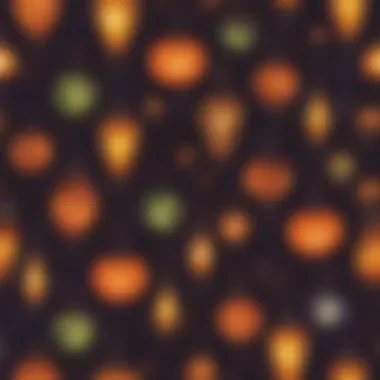
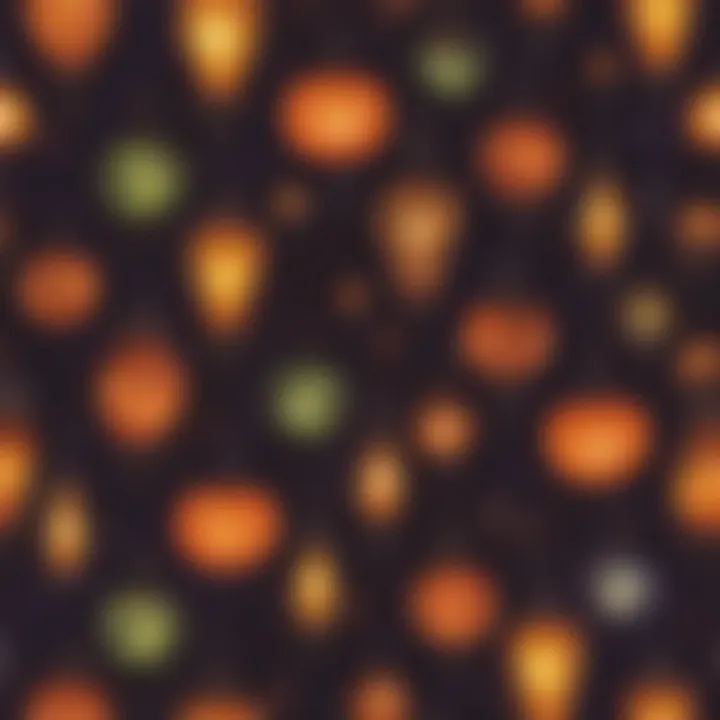
Biodegradable Vs. Non-Biodegradable Materials
When discussing Halloween lamps, it is important to understand the difference between biodegradable and non-biodegradable materials. Biodegradable materials break down naturally over time, while non-biodegradable materials can persist for hundreds of years.
- Biodegradable Materials: These include natural fibers or plant-based plastics.
- Non-Biodegradable Materials: Commonly used in cheaper Halloween lamps. They include certain plastics that do not break down.
- Benefits: They return to nature without leaving harmful residues. They offer a friendlier option for our environment.
- Concerns: These materials contribute to pollution and landfill problems.
Creative DIY Projects with Halloween Lamps
Engaging with Halloween lamps through creative DIY projects is not only enjoyable but also educational. These projects allow children and parents to explore creativity while learning about basic scientific principles. Making Halloween lamps together can strengthen family bonds and create lasting memories. Moreover, these projects often emphasize recycling and sustainability, instilling eco-friendly values in young minds.
Making Your Own Jack-o-Lantern
Creating a jack-o-lantern is a time-honored Halloween tradition that combines art and science. To begin, select a pumpkin of suitable size. It's important to choose one that is firm and free of blemishes. Here are the steps to guide the process:
- Cut the Top Off: Use a sharp knife to cut a circular opening at the top of the pumpkin. This will serve as a lid and should be large enough to fit your hand inside.
- Scoop Out the Insides: Remove the seeds and stringy insides with a spoon. This is a great time for children to explore the texture and consistency of pumpkin guts.
- Create Your Design: Draw a face or design on the pumpkin using a marker. This is where creativity shines. Children can use their imaginations to come up with unique expressions.
- Carve the Design: Carefully carve out the design using a small knife or carving tool. Adult supervision is essential here for safety.
- Light Up the Lantern: Place a candle or LED light inside. When illuminated, the carved design will cast eerie shadows, enhancing the Halloween atmosphere.
Crafting with Recycled Materials
Crafting with recycled materials encourages creativity while promoting sustainability. Using everyday items can turn into an innovative Halloween lamp. Here are some ideas:
- Plastic Bottle Lanterns: Cut and decorate plastic soda bottles. Paint or use markers to add designs, then place a glow stick inside for illumination.
- Tin Can Lanterns: Puncture holes into empty tin cans to create patterns. Fill with water and freeze overnight. Once frozen, run warm water over the can to release the ice, and then light a candle inside.
- Jar Lanterns: Repurpose glass jars by painting the outside, adding decorations, or wrapping them with yarn. These can also house tealights or fairy lights for a soft glow.
Each of these projects serves not only as a craft but also introduces children to concepts of recycling and environmental stewardship.
Science Experiments with Light and Color
Conducting science experiments with Halloween lamps can be both fun and educational. Here are some simple experiments:
- Color Mixing with Lights: Use colored filters or cellophane over a flashlight and shine different colors onto a white surface. Explore how colors combine when overlaid. This illustrates the principles of light refraction and color theory.
- Shadow Play: Set up a lamp and various objects between the lamp and a wall. Observe how the distance and angle affect the size and shape of the shadows. This demonstrates basic principles of light and geometry.
- Temperature Experiment: Compare the heat output of a traditional candle versus an LED light. Discuss why one is safer and how LEDs are more energy-efficient than traditional light sources. This introduces concepts of thermodynamics and energy conservation in a practical setting.
"Engaging in creative projects helps children learn while having fun. It inspires them to think critically and use their imagination."
In summary, creative DIY projects with Halloween lamps provide meaningful opportunities for learning and exploration. They encourage creativity and scientific curiosity, making Halloween a wonderful occasion for families to bond while understanding fundamental concepts. Emphasizing these activities can elevate the Halloween experience well beyond mere decorations.
Safety Tips for Using Halloween Lamps
When it comes to Halloween lamps, ensuring safety is crucial. Both traditional and modern lamps present unique hazards, but with some foresight, you can mitigate most risks. Understanding these safety tips helps not only in maintaining a festive atmosphere but also in preventing potential accidents that can happen during the celebration.
Fire Safety with Traditional Lamps
Traditional lamps, especially those made from pumpkins, often use candles for illumination. Candles can create a delightful glow, but they also bring fire hazards. Here are some essential safety measures:
- Stable Placement: Ensure the lamp is placed on a sturdy surface. Avoid placing it near flammable materials, like decorations or costumes.
- Supervision: Always supervise lit candles. Never leave them unattended, especially around children or pets.
- Use a Votive Candle: If possible, opt for a votive candle instead of larger candles. They are generally safer due to their contained design.
- Extinguish While Absent: Make it a habit to extinguish lamps when leaving home. A small flame can cause significant damage in your absence.
- Use Battery-Operated Options: Consider using battery-operated candles. These provide a safe alternative without the risk of flames.
"Fire incidents can happen quickly; always prioritize safety while enjoying Halloween decorations."
Child Safety Precautions
While Halloween is a time for fun, it is also essential to keep children safe around lamps. Young ones are curious and can easily reach for glowing items. Some safety precautions are:
- Keep out of Reach: Ensure lamps are positioned high enough that children cannot easily access them. This reduces the risk of tipping or playing with flame.
- Teach About Flames: Educate children on the dangers of fire and why they should not touch or play near candles or lamps.
- Use Non-Flammable Materials: When crafting or selecting lamps, use materials that are non-flammable or fire-retardant. This adds an extra layer of safety.
- Opt for Electric Options: Electric lamps and lights are generally safer than traditional candles. They do not produce heat and can reduce fire risks.
- Check Wiring: Ensure all electrical lamps have intact wires and plugs. Damaged electrical components can lead to short circuits and potential hazards.
Finale
In this article, we have journeyed through the intricate world of Halloween lamps, uncovering their historical roots, diverse types, and the fundamental science behind their design. The overarching theme emphasizes the significance of understanding these festive lights, not merely as decorative items but as cultural artifacts that reflect societal changes and technological advancements.
Importance of Understanding Halloween Lamps
Understanding Halloween lamps goes beyond just their festive presence. It invites curiosity about the interplay between creativity and scientific principles. By examining how lights work, the materials used in their construction, and the environmental impact of production methods, readers gain insight into both art and scientific inquiry. This duality encourages children and caregivers alike to explore the fascinating junction of creativity and technology.
Benefits of Engaging with the Topic
- Educational Value: The interplay of design, history, and science makes Halloween lamps a perfect tool for promoting STEM education.
- Safety Awareness: Discussing safety measures cultivates responsibility, particularly for young users who may not be aware of potential hazards.
- Environmental Consciousness: An emphasis on sustainability encourages thoughtful consumption and environmental stewardship.
This comprehensive understanding fosters a richer appreciation of Halloween as a celebration. As families engage in DIY projects or navigate safety considerations, they participate in a legacy of tradition that is both meaningful and instructive. Ultimately, Halloween lamps symbolize the spirit of creativity while serving as a reminder of how science permeates the simplest aspects of our lives.
"The beauty of Halloween lamps lies in their ability to blend fun with education, sparking curiosity in young minds."







